In an exclusive interview to SAFETY4SEA, Capt. John Wright, FNI, HCMM, Maritime Professional Council of the UK (MPC), discusses the importance of leading with kindness, highlighting that the connection between Kind Leadership and a strong business performance has yet to be widely recognized in the maritime industry. He emphasizes that Kind Leadership is crucial for fostering a “One-Team” environment, driving operational excellence, and ultimately achieving a Generative Safety Culture.
Among other advantages, Kind Leadership helps create a motivating and inclusive environment where team members feel valued and heard. In this regard, Capt. John suggests that a company should be led by a CEO who embodies Kind Leadership and is fully supported by the Board of Directors in their mission to build a true “One-Team” culture. This, he argues, is the only effective way to bridge, what is often a costly ‘chasm’ between ship and shore management teams.
SAFETY4SEA: How would you define Kind Leadership, and why is it particularly relevant to the maritime industry?
Capt. John Wright: A Kind Leader naturally introduces compassion, empathy, gratitude, dignity & humility. As Emily Marsh so eloquently explained in 2019, “Kindness empowers people to lead with positivity, purpose, and an open-mindedness that embraces new ideas. A lot of this comes down to trust. If leaders show kindness, they accelerate trust and in turn create happier, more empowered employees, who will be inspired to deliver better results.” In my experience, backed by research, when a company sincerely focuses on the health, safety & welfare of its employees, with at least an equal amount of energy as it applies to its seeking of productivity and profitability, and leads this charge through kindness, it pays off for the business like nothing else can .
S4S: What do the results of the MPC survey reveal about the importance of Kind Leadership in the maritime industry?
Capt. J.Wr.: The respondents generally viewed ‘Kind Leadership’ as an effective way of enhancing leadership, safety culture, team motivation, communication and improving the well-being of individuals. Some respondents advocated the creation of group goals and the elimination of the blame culture in favour of learning from mistakes. There was a strong belief that ‘Kind Leadership’ could be learnt and taught in the working environment and through carefully planned activities in the classroom and online. A prevalent theme in the findings was the impact that onboard leadership practices have on cadets.
S4S: How does Kind Leadership empower the workforce to drive safety and business improvements?
Capt. J.Wr.: A kind leader understands how essential it is to fully harness the enormous unused latent horsepower residing within the workforce. A motivated, trusting and fully engaged workforce can achieve extraordinary things, if they are permitted to identify the existing safety and business challenges for themselves and then encouraged to own and execute all the fixes to those identified challenges themselves. This is done of course with the support and encouragement of their onboard and shore managers, who are in turn supported by their Board Directors.
S4S: What do the survey findings suggest about the current state of leadership practices at sea?
Capt. J.Wr.: Findings generally point at under par leadership practices at sea being commonplace. This is due to inadequate, inappropriate, or absent ‘soft skills’ training, as well as a lack of onboard mentoring and coaching from trained mentors. Appropriate ‘soft skills’ training and follow up mentoring are both required, in tandem with appropriate and up to date technical training, to ensure competent and kind leadership, leading to best practice team performance.
S4S: How can STCW Leadership Training be improved to include principles of Kind Leadership?
Capt. J.Wr.: The following typical quotes from the MPC Survey demonstrate how STCW is currently viewed by seafarers: “STCW is the bare minimum. It’s dull and not working.” / “STCW is treated as a process, rather than something that adds value. It just creates greater learning requirements.”
The following can be considered for improvement:
a) Kind Leadership and ‘soft skills’ training, together with follow up mentoring, should be included in all syllabi from cadet entry level onwards throughout a career, be it afloat or ashore. It is that important.
b) ‘Soft skills’ training should be experiential, using ‘learning by doing’ methods on full mission simulators as often as possible, but especially for senior ranks and operational level managers.
c) At least as much effort should be expended on training the trainers around the world to ensure the quality of delivered training. Currently, ‘soft skills’ and simulator facilitator training standards are at best variable and at worst, woeful and counter-productive for the receiving students.
S4S: What are the common barriers to adopting Kind Leadership, and how can they be addressed?
Capt. J.Wr.: The biggest barrier to adopting Kind Leadership is company and industry culture. A mature safety culture should be at least proactive—continuously identifying and addressing issues—and ideally generative, where safety becomes an inherent part of how business is conducted. In such an environment, all processes, including incident reporting, function smoothly, which is crucial for both the industry and the companies operating within it. However, even when incidents are reported, risk reduction measures often default to the least effective corrective actions—such as requiring PPE (“Put your hard hat on!”) or adding another procedure. These controls do little to significantly reduce risks associated with workplace hazards. This is why company culture plays a critical role in effective risk management, which, in turn, directly impacts business success. Unfortunately, the link between Kind Leadership and business performance is not widely recognized in this industry. Yet, Kind Leadership is essential in fostering a “One-Team” environment, driving operational excellence, and ultimately achieving a Generative Safety Culture.
Click here for more details on how to achieve a generative safety culture
Note: This is comprehensive article, entitled, “Achieving cost savings from learning opportunities”, written by Captain Wright and published as a ‘CHIRP Maritime Insight’ article in 2021, explaining in detail the connection between Kind Leadership, company and industry culture and business/industry success. The article also sets out how these barriers may be addressed.
S4S: In what ways can fostering a culture of kindness lead to enhanced communication and collaboration on board ships?
Capt. J.Wr.: Crewmembers are encouraged by the leader to speak up when things appear to him/her to be wrong or dangerous, or when their mental model is misaligned from the captain / chief engineer following, for example, a pre departure or pre arrival briefing. This style of leadership is characterised by regular and frequent information passing to and from the leader during a docking, for example. This ‘closed loop communication’ regularly updates every member of the team’s ‘mental model’, maintains each person’s situational awareness and is one of the keys to effective teamwork and efficiency, as well as presenting a means of ‘fielding’ errors and correcting them. It is like placing several ‘wicket keepers’ behind the ‘stumps’ (the team) to catch a missed ball by the ‘batsman’ (the leader of the same team).
S4S: How can Kind Leadership positively impact crew performance or well-being? What is your feedback so far?
Capt. J.Wr.: Kind Leadership fosters a motivating and inclusive environment where team members feel valued and heard. Improved communication encourages individuals to speak up when they notice issues or when their understanding of a situation differs from others, leading to better alignment and decision-making. When employees feel respected and engaged, they are more likely to stay with the organization, reducing turnover and retaining skilled, experienced personnel. This not only enhances safety and efficiency but also lowers costs associated with training new employees. Additionally, by addressing key stressors—such as poor communication and lack of involvement—Kind Leadership helps reduce excessive stress and fatigue, further contributing to a healthier, more effective workforce.
S4S: With the energy transition and changing technologies in shipping, where do maritime leaders need to focus to support seafarers?
Capt. J.Wr.: While maritime leaders must continuously develop their technical skills and stay updated on technological advancements, the essence of leadership remains the same. Strong leadership—built on adaptability, collaboration, and leveraging the expertise of the team—enables leaders to navigate any challenge, including those brought by the energy transition and evolving shipping technologies. By fostering a culture of continuous learning and teamwork, leaders can ensure that seafarers are well-supported, equipped, and prepared for the industry’s future.
S4S: What is one change you would implement to improve the safety culture onboard, and why do you believe it would be effective?
Capt. J.Wr.: Re-visit all ‘Soft Skills’ training, as discussed above, and make it required mandatory training through STCW.
S4S: What is your key message to maritime leaders to contribute effectively to creating a safer and more sustainable maritime industry?
Capt. J.Wr.: From experience, a company must be led by a CEO who is a kind leader, wholeheartedly supported by the Board of Directors, in his or her quest to build a genuine ‘One Team’ culture. This is the only effective way the costly ‘chasm’ between the ship and shore management teams can be closed. Having achieved this, if that leader leaves for whatever reason, it is imperative they are replaced by a similarly trained kind leader. I have seen the consequences when the replacement person is, for example, money driven to the exclusion of all else, and like in a game of ‘Snakes and Ladders’ the whole company descends ‘the big snake’ near to the finish, all the way down to the start! In this case, trust and faith in the company, carefully and slowly built by the workforce over time, is lost and it takes at least a decade to regain that trust. This is a hugely costly exercise, which is a sad irony, given the alleged financial focus of the new leader!
Furthermore, on behalf of the MPC, I would like to invite all readers to consider implementing Kind Leadership (KL) in their organisation. Examples of what this will involve are: Company change management, dialogue with staff, training & mentoring, and recording derivable cost benefits from the process. If you wish to discuss this with MPC members who have experience in this area, then please email the Secretary of the MPC, Hannah Kite, at: [email protected]
Defining Kind Leadership
According to the Maritime Professional Council (MPC), “Kind leadership is an approach to leadership that creates a satisfying, inclusive and enabling working environment, which significantly contributes to measurable improvements in safety and commercial performance. It builds on the core values of respect and engagement that fosters effective communication and collaboration.’
In addition, as Baker & O’Malley explained in their book, “Leading with Kindness” in 2009: “For companies to improve, the people of the organisation need to become smarter and more resourceful and work together more effectively over time. For this to work, people need to care about their work, the company and one another. This requires the expert orchestration of a kind leader.”
The views presented are only those of the authors and do not necessarily reflect those of SAFETY4SEA and are for information sharing and discussion purposes only.








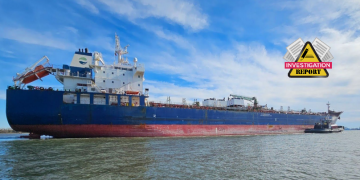



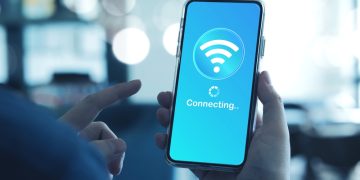

































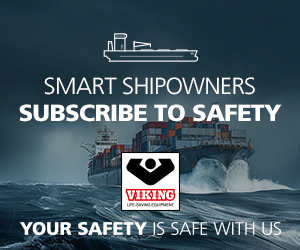
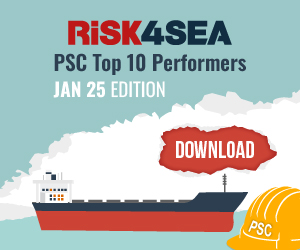
















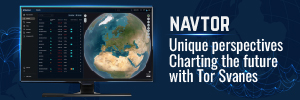

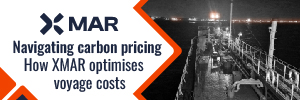


Wondering when we will see our first soft-skill induced accident. That day is coming. There is no substitute for the judgement gained after many decades at sea, it can not be supplanted by new to the industry mariners who are taought to speak to power for the sake of doing so. We need to always remember that the master alone is the accountable individual, he is wise to listen to all viewpoints but wiser to leverage his own experiences against them.